Matthew Kerns's Blog: The Dime Library, page 6
January 15, 2025
Part 1—The Dakota War—Acton Massacre: Legends of the Old West
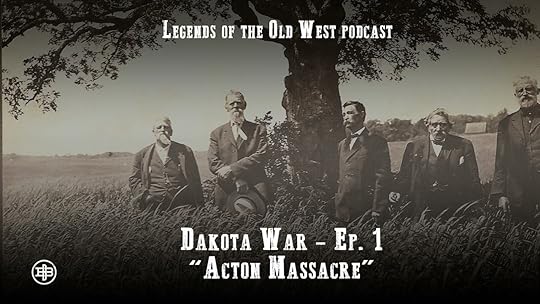
Episode 1 of 6 in a series on the 1862 Dakota War that I wrote for Legends of the Old West. On a blazing August day in 1862, desperation boiled over in Acton Township, Minnesota. Four young Dakota warriors, driven by starvation and years of broken promises, stumbled upon a settler's homestead. What began as an argument over a few eggs erupted into violence, leaving five settlers dead and the region teetering on the brink of war.
The shocking events of what would soon be called the "Acton Massacre" forced the Dakota community into an impossible choice: seek peace or prepare for an all-out conflict with the U.S. government. In this gripping first episode, we delve into the roots of the Dakota's plight—broken treaties, starvation, and a relentless push westward by settlers—while introducing Little Crow, a reluctant but courageous leader who would soon guide his people into one of the most pivotal battles of the American frontier.
Listen now to "The Dakota War: Acton Massacre" on your favorite podcast platform.
Available on Spotify:
And Apple Podcasts:
All of the Legends of the Old West podcasts are available at:
https://blackbarrelmedia.com/legends-of-the-old-west/
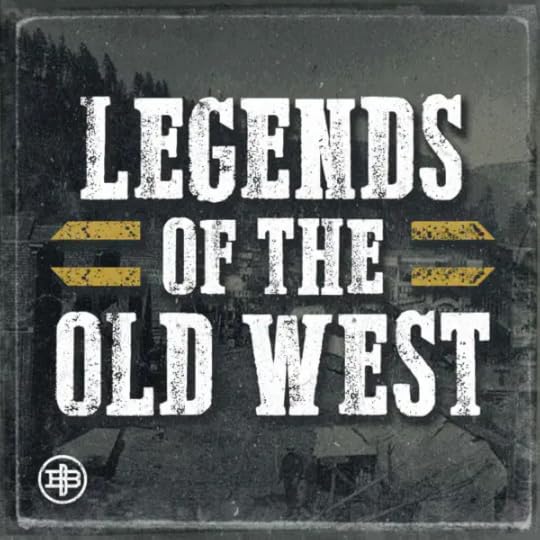
My book, Texas Jack: America's First Cowboy Star, is available at:https://amzn.to/4g4WCxQ
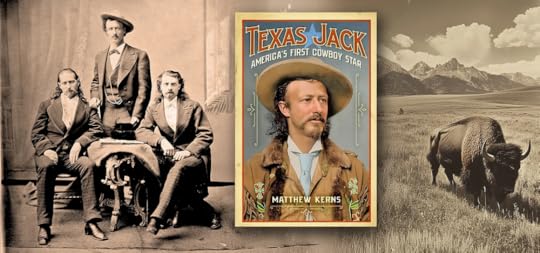
January 13, 2025
The Art of Promotion
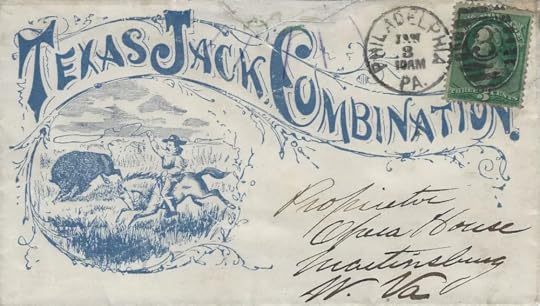
This envelope, adorned with the vibrant logo of the Texas Jack Combination, is a fascinating artifact from the 19th-century world of entertainment promotion. After parting ways with Buffalo Bill Cody following their 1876 season, Texas Jack Omohundro created his own dramatic touring company. This envelope, mailed from Philadelphia to the proprietor of an opera house in Martinsburg, West Virginia, exemplifies the extensive marketing effort that propelled Texas Jack and his troupe to fame.
The letter inside likely bore Texas Jack’s distinctive letterhead, offering to book a performance at the local theater. It was one part of a sophisticated marketing strategy. When a show was planned for a town, advance agents like the legendary John Burke played a key role. Burke, who would later elevate Buffalo Bill's Wild West into a national phenomenon, would charm local newspaper editors, regaling them with tales of the Wild West featuring Texas Jack, Buffalo Bill, and Wild Bill Hickok. These stories invariably made their way into the papers alongside advertisements for the upcoming performance.
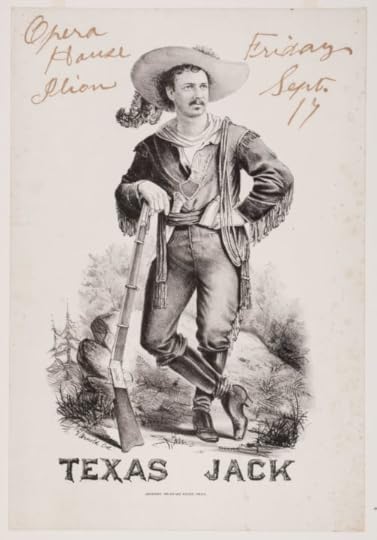
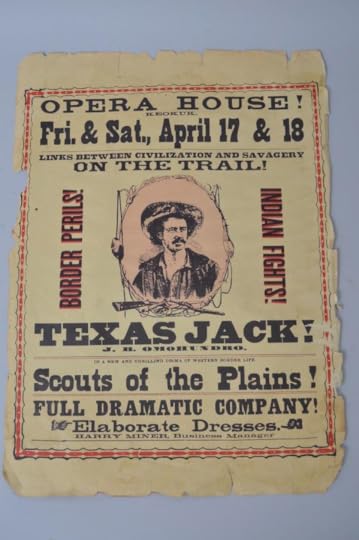
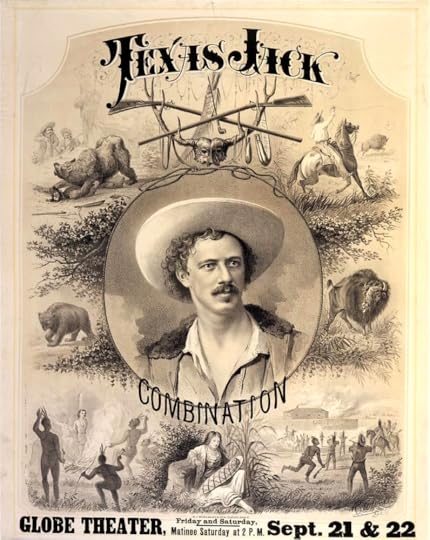
Posters went up throughout the town, building excitement for Texas Jack's arrival. On the big day, a parade welcomed the famous cowboy to town. He would amaze audiences with his remarkable sharpshooting skills, often entertaining local children by shooting coins tossed into the air.
The promotional tactics pioneered by John Burke and others in the 19th century laid the groundwork for modern marketing. To learn more about these innovative strategies and their lasting impact, check out Joe Dobrow’s book Pioneers of Promotion here.
This envelope and its story remind us of a time when the Wild West was brought to life in theaters across the country, creating a legacy of entertainment and promotion that continues to inspire today.
January 8, 2025
The Loss of History at Will Rogers State Historic Park Amid the Pacific Palisades Fire
The devastating Pacific Palisades Fire has consumed historic landmarks across Los Angeles, including the ranch house and surrounding buildings at Will Rogers State Historic Park. These structures were more than just relics of the past; they represented a vital link between one of America’s most beloved figures and the Wild West traditions that shaped his life and career.

Will Rogers, a Cherokee-born cowboy, humorist, and Hollywood star, found his start in show business performing rope tricks in Texas Jack Junior’s Wild West show during a tour in South Africa. Texas Jack Junior, in turn, carried the name and legacy of Texas Jack Omohundro, a legendary scout and showman who saved Junior from a Comanche raid. This lineage of storytelling, performance, and cowboy artistry connected Rogers to a broader tradition of Western showmanship, one he would modernize and bring to the world stage.
Rogers’ historic ranch in Pacific Palisades, a site managed by California State Parks, was a testament to his legacy. The ranch featured a 31-room house, stables, and trails where visitors could experience a piece of his life firsthand. Now, the property lies in ruins, reduced to ashes by the raging Palisades Fire, which has also devastated communities across the region.
While the destruction of the Will Rogers ranch house is a heartbreaking loss for history and culture, the fire’s human toll is even more profound. Entire neighborhoods in Los Angeles have been ravaged by the flames, leaving families displaced, homes destroyed, and communities grappling with overwhelming loss. Driven by hurricane-force winds, the fire has stretched first responders to their limits as they work tirelessly to protect lives and contain the damage.
This tragedy reminds us not only of the fragility of historic landmarks but also of the resilience of the people who endure such hardships. Will Rogers’ legacy—rooted in humor, humility, and an unshakable connection to his cowboy roots—offers a lesson in perseverance. Yet, in this moment, our focus must be on supporting those who are suffering, helping them rebuild their lives and their communities.
For those seeking updates or ways to assist, please visit CAL FIRE’s incident webpage at:https://www.fire.ca.gov/incidents
Through loss, we are reminded of the preciousness of both history and humanity. The stories of Will Rogers, Texas Jack Junior, and Texas Jack Omohundro have endured for generations, and they will continue to inspire. But today, let us also honor the living—the families and communities who are navigating this devastating moment and rebuilding their futures amidst the ashes.
January 6, 2025
The Stabbing of Isaac Cody: Buffalo Bill's Father Take a Stand Against Slavery in Bleeding Kansas
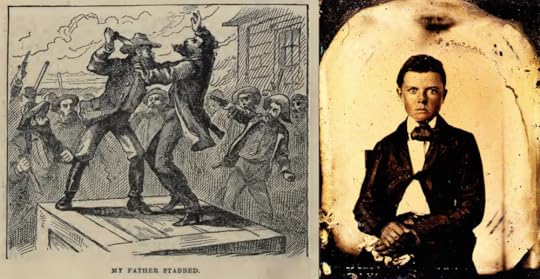
On the evening of September 18, 1854, a large group gathered at Major M.P. Rively’s store on Salt Creek, near Leavenworth, Kansas. Four months earlier, Congress had passed the Kansas-Nebraska Act, which repealed the Missouri Compromise and created two new territories, Kansas and Nebraska. The Act also stated that going forward the citizens of each territory, rather than Congress, could determine for themselves if slavery would be allowed.
The citizens of Kansas Territory wanted to be a state, and the question of whether that state would allow slavery divided the territory much as it divided the country. The men at Rively’s store were debating the issue and tensions ran high on both sides. One of the men there that night was Isaac Cody. Some of the men in the crowd that night knew that Isaac’s brother was a Missouri slave-owner, and begged Isaac to speak in their favor. After much cajoling and after hearing several other men speak in favor of allowing slavery in the state of Kansas, Isaac was finally convinced to share a few words.
Isaac rose to his feet and stepped up on the box to address his neighbors. He spoke for a few minutes about his understanding of the issue, telling the men that he had been a pioneer during the statehood movement in Iowa, and had helped to organize that state. “Gentlemen,” he said, “I tell you now, and I say it boldly, that I propose to exert all of my power in making Kansas the same kind of state as Iowa, and I shall always oppose the further extension of slavery.”
Isaac planned to continue, but a man in the crowd stood up and yelled "Get off that box, you black Abolitionist, or I'll pull you off!" Isaac recognized the man as one of his brother’s employees, a fiercely pro-slavery man from Missouri. Isaac defiantly remains on the box, and continues to speak. “These are my sentiments, gentlemen, and let me tell you…”
Isaac doesn’t finish his speech, or even his sentence. The other man jumped on the box, brandishing a large bowie knife, and stabbed Isaac twice, sending him to the floor before making a hasty escape.
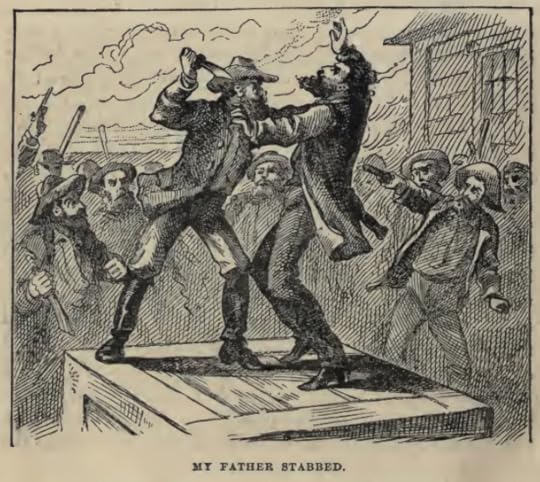
Isaac was rushed to his home, where he was attended by a doctor while his wife, daughters, and son William watched and waited, wondering if their patriarch would make it through the night.
Isaac Cody didn’t die that night. It took a year and a half for his wounds to take him down, and he spent those months desperately hiding from the increasingly hostile conflicts that erupted in what became known as Bleeding Kansas. Isaac’s death in 1857 would send his then 11-year-old son William Cody on the path that would turn him into the world famous Wild West legend Buffalo Bill.
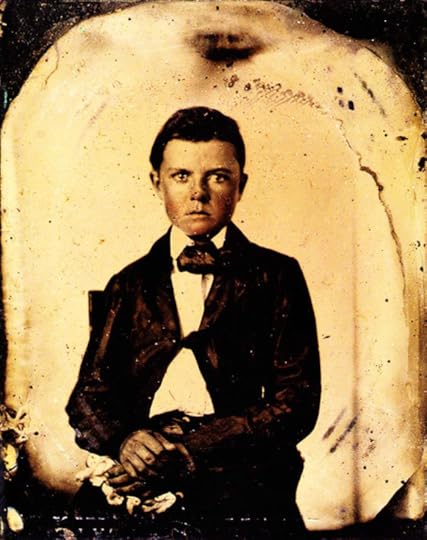
My book, Texas Jack: America's First Cowboy Star, is available at:
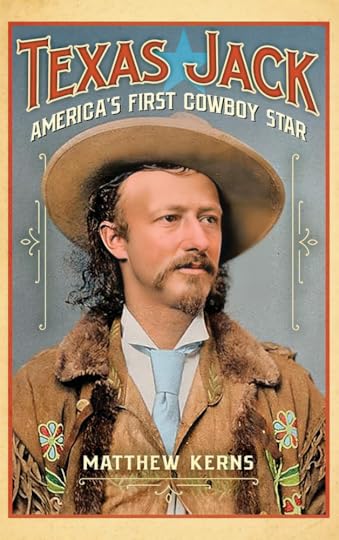
January 2, 2025
2024 In Review
As we turn the page on 2024 and look toward the adventures of 2025, I wanted to take a moment to reflect on some of the incredible projects I’ve had the privilege of working on this past year—and to highlight the exceptional work of others who continue to bring the rich tapestry of the Old West to life.

One of the most rewarding collaborations of 2024 was contributing to Legends of the Old West, produced by the brilliant team at Black Barrel Media and narrated by the incomparable Chris Wimmer.

If you’re not already a devoted listener, do yourself a favor and dive into their phenomenal catalog of episodes. Chris Wimmer’s skillful narration and deep reverence for history make him one of the finest podcasters in the genre. His ability to weave complex narratives into captivating stories is unmatched, bringing history to life with authenticity and heart.
This year, I was fortunate to research and write several series this year:
Buffalo Bill Cody (Playlist): A deep dive into the life and legacy of one of the most iconic figures of the American West.
Orrin Porter Rockwell (Playlist): Exploring the fascinating and controversial life of this gunslinging bodyguard and folk hero.
The Legendary Mountain Men (Playlist): Tales of Jedediah Smith, Hugh Glass, and John “Jeremiah” Johnston—three larger-than-life figures who helped shape the mythology of the frontier.
A fourth series, submitted just after Thanksgiving, will be released in 2025. Stay tuned—it’s one you won’t want to miss!
Chris and the team at Black Barrel Media continue to set the gold standard for historical podcasts, and I’m honored to have played a small role in their outstanding work.I was privileged to be asked to write a blurb for Robert Aquinas McNally's book Cast Out of Eden: The Untold Story of John Muir, Indigenous Peoples, and the American Wilderness (https://amzn.to/3C4T1Sp), which I called “A thought-provoking masterpiece. Following the life and achievements of John Muir, ‘Father of the National Parks,’ McNally masterfully shows how one of America’s greatest achievements—the preservation of our wildest places—is indelibly tied to one of our most abject failures—the treatment of the Native Americans who lived there.”

This year also saw some exciting breakthroughs in my own research. I was thrilled to help confirm Texas Jack Omohundro’s ownership of two historic weapons: a Smith & Wesson revolver and a Remington-Keene bolt-action rifle, which may have been one of the last firearms he ever acquired. Uncovering these connections feels like stepping directly into the past, holding the threads of history in your hands.
 Adventures in Blogging
Adventures in Blogging
Over on my blog, Dime Library, I delved into a wide range of topics this year, including:
The use of AI in imagery, video, podcasts, and music to reimagine Wild West figures.
Examining the portrayal of Old West legends in modern advertising.
Sharing newly digitized interviews, articles, and photographs of Texas Jack Jr.
Eulogizing my sweet grandmother, Si, whose legacy continues to inspire me.
Questioning the authenticity of auction items claiming ties to figures like Wild Bill Hickok and Buffalo Bill Cody.
Reconnecting with old friends and making new ones at the Western Heritage Awards at the National Cowboy & Western Heritage Museum in Oklahoma City.
Celebrating a cowboy hat once owned by legendary actor Richard Roundtree, commemorating his iconic role as Shaft.
Unveiling new-to-the-internet images of Giuseppina Morlacchi, a trailblazing performer of the 19th century.
Reflecting on the bittersweet closing of Wild West Magazine, where my Spur and Western Heritage Award-winning article was published in 2022.
Visiting Texas Jack’s final resting place in Leadville, Colorado, and engaging with locals at Two Dog Books.
Exploring the complex friendship between Buffalo Bill Cody and Oglala Lakota chief Iron Tail (Siŋte Máza).
As we step into 2025, I’m excited to uncover even more untold stories of the Old West and share them with all of you. This journey wouldn’t be the same without the incredible community of readers, listeners, and history enthusiasts who share my passion for preserving this remarkable chapter of history. Thank you for your support, your curiosity, and your love of the stories that make the West—and its legends—eternal.



Here’s to another year of discovery, storytelling, and bringing the past to life!
December 31, 2024
History or Ad in Disguise?
Have you seen this image somewhere on social media?

Social media is flooded with images and posts that seem to provide insightful or inspiring historical content. A striking photograph of Cherokee women accompanied by a caption about their leadership and warrior roles might appear educational and shareworthy at first glance. However, many of these posts have an ulterior motive: driving engagement to promote products and generate sales. Behind the scenes, they often link to merchandise websites, such as print-on-demand stores, far removed from the cultures they claim to represent.
In this article, we'll explore how these campaigns operate, why they succeed, and how you can spot and avoid sharing AI-generated, historically inaccurate images and deceptive ads.
Companies exploiting this strategy aim to blend advertising with cultural pride and historical admiration. They create visually arresting images—often AI-generated or digitally manipulated—and pair them with emotionally charged or motivational captions. The goal? To get users to engage, share, and unknowingly promote their product links.
For instance, an image of three women in traditional Native American attire, labeled as "Cherokee warriors," might inspire admiration. The accompanying text emphasizes their strength, leadership, and historical importance. This narrative resonates with viewers, particularly those interested in indigenous cultures, feminism, or history. But often, the image and text are not sourced from reliable historical references. Instead, they're designed to drive traffic to websites selling t-shirts, mugs, and other merchandise—products that often have no meaningful connection to the culture they claim to represent.

Emotional Appeal: The content taps into themes like empowerment, pride, and history, evoking a strong emotional response that motivates users to share.
Visual Impact: AI-generated or digitally manipulated images are often polished and dramatic, making them eye-catching.
Misplaced Trust: Social media users tend to trust what they see and read without verifying the source.
Engagement Algorithms: Platforms like Facebook, Instagram, and Twitter prioritize content with high engagement rates, inadvertently boosting these deceptive posts.
AI tools excel at generating realistic yet fabricated images. They blend historical aesthetics with modern design precision, making it difficult to discern authenticity. Here are a few common characteristics of AI-generated images:
Unrealistic Symmetry: AI often produces faces and poses that are too perfect or symmetrical to be natural. Men and women from history didn't often adhere to modern beauty standards. If it looks to good to be true, or authentic, it probably is.
Inconsistent Details: Hands, accessories, and intricate clothing patterns may appear warped or oddly rendered.
Overly Uniform Lighting: The lighting and shadows in AI-generated images often lack the complexity seen in real photographs. Especially for outdoor photography. The vast majority of historic images of people are posed and in a photography studio.
Generic Backgrounds: The settings in AI-generated images may seem flat, vague, or disconnected from the subjects.
By recognizing these markers, users can critically assess the authenticity of an image.

Here are some steps you can take to identify whether an image or post is misleading:
Check the Source: Verify whether the post cites a credible source or archive for the image and information.
Research the Image: Use reverse image search tools like Google Images or TinEye to find the origin of the photo.
Inspect Metadata: Download the image and examine its metadata for signs of digital manipulation or AI creation.
Look for AI Imperfections: Pay attention to details like hands, facial features, and clothing patterns.
Be Skeptical of Links: Posts linking to unrelated websites, like merchandise stores, are red flags.

By sharing posts with inaccurate historical information, users unintentionally perpetuate misconceptions about the cultures and histories they aim to celebrate. Worse, they help exploit these cultures for profit. Websites like the one this post was linked to—a print-on-demand t-shirt and merchandise website registered to an owner in Reykjavik, Iceland—capitalize on this goodwill without giving back to the communities they appropriate.
Authentic cultural education and appreciation should come from verified sources, historians, and members of the communities themselves. Supporting indigenous-owned businesses, artists, and initiatives is a much more meaningful way to celebrate their heritage.
Social media can be a powerful tool for education and cultural exchange, but it’s also a fertile ground for exploitation. Posts that appear to honor history or promote awareness often have hidden commercial motives. By learning to identify AI-generated images and understanding the strategies behind these campaigns, you can avoid being misled—and help others do the same.
Remember: Sharing responsibly is just as important as sharing enthusiastically. The next time you see a stunning historical post, take a moment to verify its authenticity before hitting "share."
I understand that it might be hard to hear this from me—someone who shares historical images on social media with links to my website, where you can buy my book. Why should you trust me and the images and stories I share over a post like this supposed picture and description of Cherokee women?
Trust is built on transparency and credibility. On my website, I make it clear who I am—my name, my real name, Matthew Kerns, is right there at the top of the page and on the cover of the book I sell. I’ve won awards like the SPUR and Western Heritage Award for my research and writing about American history. But more importantly, I back my claims with thorough research and a passion for preserving and sharing authentic history. While I would love for you to buy and read my book, my primary goal is to foster genuine exploration and learning about our shared history. That’s what drives me, and I hope it’s what earns your trust.
December 28, 2024
Fake, False, and Ficticious


Images like the ones above have recently made the rounds on social media, with claims that they depict James Butler “Wild Bill” Hickok and William Frederick “Buffalo Bill” Cody. However, these images are not authentic photographs—they are AI-generated renderings that bear little resemblance to the historical figures they claim to portray. Such images could easily have been created with a vague prompt like “two Wild West dudes,” and yet they are being passed off as authentic depictions of real individuals.


The reality is that there are only two known photographs of Wild Bill and Buffalo Bill together, and both include a third man, John Baker “Texas Jack” Omohundro. These three men traveled the country together in 1873 and 1874 as part of a dramatic production called The Scouts of the Plains. By ignoring Texas Jack and presenting only Hickok and Cody, these AI-generated images and their accompanying false narratives not only distort history but also erase an important figure from the story.
This issue goes beyond historical inaccuracy—it highlights the dangers of AI-generated media in the modern age. These images, paired with plausible but misleading text, create an illusion of authenticity that can mislead viewers into accepting them as factual. In doing so, they remove crucial historical context and perpetuate misinformation. We are quickly approaching a future where it will be increasingly difficult for the average person to discern real historical evidence from fabricated digital creations.
The accompanying AI-generated caption exemplifies this problem. It describes Hickok and Cody in a way that plays on well-known myths and clichés about the Wild West. While some details are true, such as Hickok’s tragic death in Deadwood and Cody’s later fame with his Wild West show, the narrative conveniently overlooks historical facts, such as their collaborative work with Texas Jack. It offers a sanitized and dramatized version of history designed for mass appeal, further obscuring the truth.

To truly appreciate the towering figures of history, including those of the Wild West, it is essential to turn to reputable historians and writers who dedicate their lives to uncovering and sharing the truth. If you want to learn more about Wild Bill, Buffalo Bill, Texas Jack, Wyatt Earp, Billy the Kid, Crazy Horse, or Geronimo, seek out the work of those who have done the hard research. By consuming their work, you’ll not only uncover a richer and more nuanced understanding of history but also find yourself far more entertained and enlightened than you ever will by a couple of fake posts on social media. History deserves to be remembered accurately, and we owe it to ourselves to engage with it responsibly.
November 29, 2024
150th Anniversary of Texas Jack's Trip to Yellowstone
 Celebrating the 150th Anniversary of Texas Jack’s Yellowstone Adventure with the Earl of Dunraven
Celebrating the 150th Anniversary of Texas Jack’s Yellowstone Adventure with the Earl of DunravenThis month marks the 150th anniversary of one of the most adventurous expeditions into the uncharted wilderness of what is now Yellowstone National Park. In November 1874, Texas Jack Omohundro concluded his incredible journey with the Earl of Dunraven, Dr. George Kingsley, and Captain Wynne. This trip, vividly chronicled by both Texas Jack and the Earl, not only highlighted the breathtaking landscapes and wildlife of Yellowstone but also contributed significantly to its international renown.
Texas Jack’s firsthand account, originally printed in The Boys of the World, paints a vivid picture of the journey’s chaotic yet thrilling start. Jack recalled setting out from Denver, Colorado, with an eclectic party that included English nobility, servants, and dogs. From there, the group traveled west, navigating logistical challenges and cultural curiosities.
Jack’s humor shines in his description of traveling with the Earl: "Guns, pistols, dogs, servants, scouts, English lords, and other bundles were tumbled in promiscuously," he wrote, illustrating the haphazard loading of their stagecoach. Jack’s dry wit also highlighted the Earl’s impatience and determination, as the driver ignored his pleas for a smoother ride, mistaking them for cries to "go faster and make time."
Once the party arrived in Bozeman, Montana, they acquired horses and pack mules to continue into the Yellowstone Valley. Jack’s description of their first encounters with the region’s grandeur is a testament to its allure: “The valley here is wide, the rolling hills extending back some distance to the main range, and the country grandly beautiful.”
The group faced plenty of danger, from encounters with hostile Sioux to daring bear hunts. One memorable incident involved Jack swimming across a river to recover stolen horses while being pursued by mounted warriors. He reflected on this nerve-wracking moment with characteristic nonchalance, noting, “I didn’t hesitate an instant but dropped the fishing tackle, seized my rifle, mounted, and swam across the river.”
Yellowstone’s abundant wildlife provided both challenges and opportunities for the adventurers. Jack vividly described his encounter with a grizzly bear that nearly cost him his life. After tracking the animal and wounding it twice, Jack found himself scrambling up a tree to avoid the bear’s charge:
“At the crack of my rifle, the old fellow raised up on his hind legs and bit his side angrily... He rushed upon me, and with one blow of his large claw, he stripped the bark off within one yard of my feet.”
From his perch, Jack fired several shots with his revolver before the bear staggered off to a nearby pond. Finally, Jack delivered a killing shot at close range, marveling at the bear’s massive size—estimated at 1,200 pounds. This harrowing tale demonstrates both the dangers of the frontier and Jack’s unmatched skill and bravery.
The Earl of Dunraven, a travel writer and adventurer, also documented the journey in his book, The Great Divide. Dunraven’s observations complemented Jack’s, offering a more formal yet equally enthusiastic portrayal of Yellowstone’s wonders. He praised the park’s geological marvels, including its geysers and hot springs, and its diverse wildlife.
Dunraven’s writings were instrumental in introducing Yellowstone to a European audience. His accounts emphasized not only the beauty of the region but also the importance of preserving it. This perspective aligned with the nascent conservation movement, as Yellowstone had been designated the world’s first national park just two years earlier.
Texas Jack’s involvement in the expedition underscores his significance as an explorer and storyteller of the American West. His colorful accounts brought Yellowstone to life for readers who could only imagine the rugged beauty and raw adventure of the frontier. Jack’s partnership with Dunraven bridged cultural divides, showing how the American wilderness captured imaginations far beyond U.S. borders.
Today, Yellowstone National Park is a symbol of natural wonder and conservation. The expedition led by Texas Jack and the Earl of Dunraven played a pivotal role in building its legend. Jack’s gripping narratives, coupled with Dunraven’s eloquent writings, helped cement Yellowstone’s reputation as a must-visit destination for adventurers worldwide.
As we reflect on this 150th anniversary, we honor the spirit of exploration and storytelling that Texas Jack and his companions embodied. Their journey through Yellowstone remains a reminder of the park’s timeless appeal and the enduring power of the written word to inspire awe and wonder.
Timeline of Texas Jack's Yellowstone Expedition with the Earl of Dunraven (1874)
Here’s a chronological overview of Texas Jack Omohundro's Yellowstone adventure alongside the Earl of Dunraven, Dr. George Kingsley, Captain Wynne, and others, culminating in their return on November 25, 1874:
Texas Jack leaves New York to meet the Earl of Dunraven’s party in Denver, Colorado.
Jack arrives in Denver, where he meets the Earl of Dunraven and his companions.
The group spends a few days in Denver acquiring supplies and enjoying the city’s recreation before heading west.
The group travels to Salt Lake City, Utah.
During their stay, they meet Brigham Young, the leader of the Latter-day Saints, and explore the city’s unique culture and landmarks.
After leaving Salt Lake City, the group travels by stagecoach to Corrine, a significant Overland Stage Line stop.
From Corrine, they charter a stagecoach to carry them and their supplies toward the Yellowstone region.
The party passes through Virginia City, Montana, a bustling frontier town, before heading to Bozeman.
In Bozeman, Jack acquires saddle ponies, pack mules, and other necessary equipment for the wilderness expedition.
Dunraven and others take a detour to visit a Crow village and witness a war dance.
The group enters the Yellowstone Valley, encountering friendly Bannock Indians and the dramatic landscapes of the region.
They begin exploring Yellowstone’s marvels, including the Yellowstone River and nearby hot springs.
Hunting and fishing expeditions take place, including notable encounters with elk and grizzly bears.
The party delves deeper into Yellowstone, marveling at its geysers, thermal features, and wildlife.
Jack documents thrilling incidents, including his dangerous encounter with a grizzly bear, which he ultimately kills after a desperate battle.
The Earl of Dunraven records detailed observations of the park’s geological and ecological wonders, later publishing them in The Great Divide.
As snowfall increases, the party begins making their way out of the Yellowstone region.
Their return journey involves retracing their steps through Bozeman, Virginia City, and other settlements in Montana.
The group catches their final train to complete the expedition.
This marks the official conclusion of their three-month journey through Yellowstone and the surrounding wilderness.
November 19, 2024
Not Doc




The bottle is undeniably eye-catching: fonts that conjure the rugged charm of the Wild West, a six-shooter cylinder cap that screams gunslinger, a gold bull skull emblem that adds a touch of authenticity, and that iconic quote from Val Kilmer in Tombstone, “I’m your Huckleberry.” Every detail of Doc Holliday Straight Bourbon Whiskey seems meticulously designed to capture the legendary aura of one of the West’s most enigmatic figures. It’s a masterclass in branding, evoking the grit and allure of frontier life in a way that feels both nostalgic and bold. But there’s one glaring issue: the picture on the label isn’t Doc Holliday.

The image on the bottle, often misidentified, has been mistakenly circulated as John Henry Holliday for decades. It appears to be a retouched version of a photograph reportedly taken by Tombstone photographer C.S. Fly, possibly depicting another man present in the silver boomtown during the infamous O.K. Corral era. At some point—long before Photoshop—the image was altered to add the iconic cowlick now associated with Doc.


However, historians and experts have debunked its authenticity, pointing out that the man in the photo doesn’t match the verified images of Holliday, and no one in Doc's family ever had copies of these images. Though his image has become mistakenly associated with the Wild West gambler, gunslinger, and dentist, the true identity of the man in this picture remains a mystery, but one fact is clear: it’s not Doc.
John Henry Holliday was born on August 14, 1851, in Griffin, Georgia. A brilliant yet sickly child, Doc contracted tuberculosis early in life. Despite his illness, he excelled academically and graduated from the Pennsylvania School of Dentistry at just 20 years old. However, his worsening symptoms made practicing dentistry back home in the humid South untenable, prompting him to head west, where doctors told him the dry air would alleviate the disease.

Doc's persistent coughing, often accompanied by blood, made his dental patients understandably uneasy, prompting him to leave dentistry behind. Moving west marked a turning point in his life. In towns like Dallas, Dodge City, and eventually Tombstone, he abandoned his dental tools for a deck of cards. Gambling, a profession with surprising respectability in frontier saloons, became his livelihood. Over time, Doc built a reputation as a masterful card player, a deadly marksman, and a man you didn’t want to cross.
Doc Holliday’s fame skyrocketed after the Gunfight at the O.K. Corral in 1881. The fight, which lasted only about 30 seconds, pitted Doc and his friends Wyatt, Virgil, and Morgan Earp against the Clanton and McLaury factions. Though the incident left three men dead and made national headlines, Doc’s role in the shootout cemented his place in Wild West lore. Stories of his quick draw, his loyalty to Wyatt Earp, and his unpredictable temper turned him into one of the Old West's most memorable figures.

The other authentic image of Doc as an adult was taken in September 1879 in Prescott, Arizona. The image was taken shortly after Holliday accompanied his friend Wyatt Earp to Prescott, to answer for an earlier incident in Las Vegas, New Mexico Territory.

Earlier that year, Doc had been involved in the killing of "No Nose" Mike Gordon, a local troublemaker who had been on a drunken rampage. Gordon had fired shots outside Holliday's saloon and allegedly threatened Doc’s life before Holliday shot him in what a coroner’s jury eventually deemed “excusable homicide.”

Although no charges were filed, the incident made staying in Las Vegas untenable for Holliday, so he joined Wyatt Earp on his journey west. This photo, likely taken during their brief stop in Prescott, shows Holliday dressed formally in a long coat, a reflection of his Southern roots and his pride in maintaining a gentlemanly appearance despite his dangerous and tumultuous lifestyle. It remains a powerful window into the enigmatic man behind the legend.Doc Holliday, like Texas Jack Omohundro a few years earlier, spent time in Leadville, Colorado, the highest elevation city in America, nestled over 10,000 feet in the Rocky Mountains. Both men sought the dry mountain air to ease the symptoms of tuberculosis, the disease that ultimately claimed Jack’s life a month shy of his 34th birthday. Doc’s time in Leadville was marked by a combination of gambling, drinking, and declining health. He remained in the mining town for a few years, scraping by on winnings from faro and poker, but his deteriorating condition and worsening bouts of coughing made it increasingly difficult for him to support himself. In 1884, while living in Leadville and struggling with declining health and financial difficulties, Doc had a dispute with Billy Allen, a bartender and former lawman. Allen had lent Holliday $5 to cover a tab, and when Holliday was unable to repay it, Allen threatened him. The situation escalated when Allen publicly confronted Holliday, reportedly stating he would “beat the life out of him.”
Doc, anticipating violence, armed himself. On August 19, 1884, when Allen entered Hyman’s Saloon, Doc shot at him from a seated position. One bullet struck Allen in the arm, and another hit his hip, causing non-lethal injuries. Doc was arrested and charged with attempted murder, but he claimed self-defense. During his trial, his lawyer emphasized Doc’s frail health and the serious threats Allen had made against him. A jury ultimately acquitted Holliday, and he returned to his usual routine of gambling in Leadville’s saloons.

This incident was one of the last documented acts of violence involving Doc Holliday and underscores the precarious and often dangerous nature of his life in the Old West. It also highlights how even in his declining years, Doc’s reputation and quick trigger finger continued to precede him.Eventually, in search of a better climate and new opportunities, Doc left Leadville for Glenwood Springs, where he hoped the mineral hot springs might provide relief. Tragically, the move marked the final chapter of his life. Tuberculosis continued to ravage his health, and by the time he died in Glenwood Springs, Colorado, on November 8, 1887, he was only 36. His last reported words—“This is funny”—reflect the sharp wit and fatalism or gallows humor that characterized his life.
Despite his brief life, Doc Holliday’s legend looms large in American pop culture. From the dime novels of the late 19th century to blockbuster films and TV shows, Doc is remembered as a complex antihero: brilliant, deadly, loyal, and haunted by the specter of his own mortality. He has been portrayed by some of the world's finest actors, like Victor Mature in My Darling Clementine, Kirk Douglas in Gunfight at the O.K. Corral opposite the masterful Burt Lancaster as Wyatt Earp, Jason Robards in Hour of the Gun, Stacy Keach in Doc, and Dennis Quaid in Kevin Costner's Wyatt Earp. Dennis's brother Randy, perhaps best known as Uncle Eddie of National Lampoon's Vacation fame, played Doc in the TV movie Purgatory.






The 1993 film Tombstone helped introduce Doc Holliday to a new generation. Val Kilmer’s portrayal of Doc as a sardonic, terminally ill gunslinger was widely acclaimed and remains one of the most celebrated performances in Western cinema. Kilmer’s delivery of lines like “I’m your huckleberry” and “You’re a daisy if you do” contributed to the resurgence of interest in the real-life figure. The fact that Kilmer was given an Oscar for his performance is considered by many to be one of the most glaring oversights in Academy Award history.
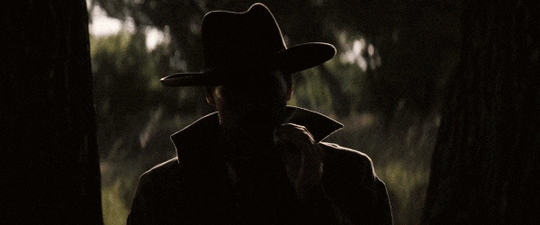
In literature, Doc Holliday has appeared in historical novels, biographies, and even speculative fiction, further mythologizing his life. His intelligence, gambler's charm, and tragic circumstances make him a compelling character, one who resonates with themes of loyalty, mortality, and redemption.
Unfortunately, with Doc’s fame comes misrepresentation. Doc Holliday Bourbon isn’t the only offender in perpetuating historical inaccuracies. In Glenwood Springs, Colorado—where Holliday died and is buried—the so-called Doc Holliday Museum (housed beneath Bullock’s Western Wear) sells t-shirts featuring the image of another man: John Escapule.
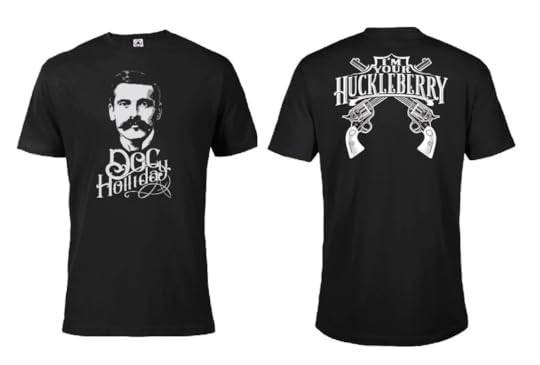
Escapule, a French immigrant who lived in Tombstone during the same period as Doc Holliday, is sometimes misidentified as the gunfighter. However, his photo shows a healthy, robust man—strikingly different from the thin, gaunt figure of Doc, who was battling the advanced stages of tuberculosis at the time. Escapule also left his impact on the lore of Tombstone. Land he donated from earnings on his "State of Maine" silver mine was used to make the town's cemetery, and his great-grandson, Dusty Escapule, is the current mayor of Tombstone..

This issue is not new. Misidentified photos have a way of sticking around, gaining traction through repetition. Once a picture becomes associated with a famous figure, it becomes part of public consciousness. Correcting these inaccuracies is a slow process, as the myth often proves more enticing than the truth.
Doc Holliday’s enduring appeal is rooted in the contradictions of his life. A genteel Southern dentist turned gambler and gunslinger, he embodied the tension between civilization and frontier lawlessness. His loyalty to Wyatt Earp, despite their starkly different personalities, speaks to a code of honor that resonates in tales of the Old West.
Yet Doc’s story also highlights the harsh realities of the frontier: a life shortened by illness, friendships forged in bloodshed, and the struggle to make sense of a rapidly changing world. He wasn’t the larger-than-life hero Hollywood often depicts, but a man whose flaws and vulnerabilities made him relatable.

Honoring Doc Holliday’s true legacy means preserving the facts, including his image. Whether on bourbon bottles, t-shirts, or museum exhibits, representations of Holliday should reflect the real man, not a fabrication of marketing or mistaken identity.

So next time you see a photo of “Doc Holliday,” take a closer look. Is it the man himself, or just another ghost from the Wild West? Separating fact from fiction is an essential step in keeping history alive—and authentic.And if the good folks at the World Whiskey Society, who make a fine bourbon that image Doc would have been proud to see his name on, want to take a step towards historical accuracy, I did them the favor of fixing their bottle.


November 17, 2024
The Bookshelf: Author Spotlight - Matthew Kerns
I’m thrilled to share this Dalton Daily Citizen-News feature that highlights my journey as an author and dives into my work on Texas Jack: America’s First Cowboy Star. It’s a privilege to see my passion for storytelling and uncovering forgotten histories resonate with readers.
This article offers a glimpse into what inspired my deep dive into the life of Texas Jack Omohundro and why his story is such an essential piece of the Wild West’s mythos. If you’re curious about my research process, my connection to Texas Jack, or what’s next for my writing, you’ll find it here!
Check out the full article: The Bookshelf: Author Spotlight - Matthew Kerns
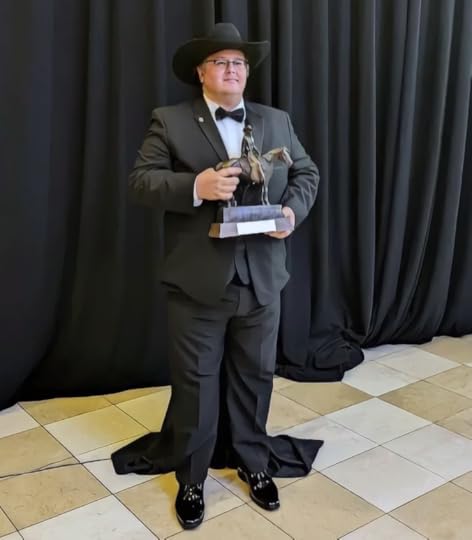
Thank you for your continued support—I’d love to hear your thoughts after reading!
Stay tuned for more updates and stories as we continue to explore the fascinating tales of the Wild West together.
-Matthew Kerns



